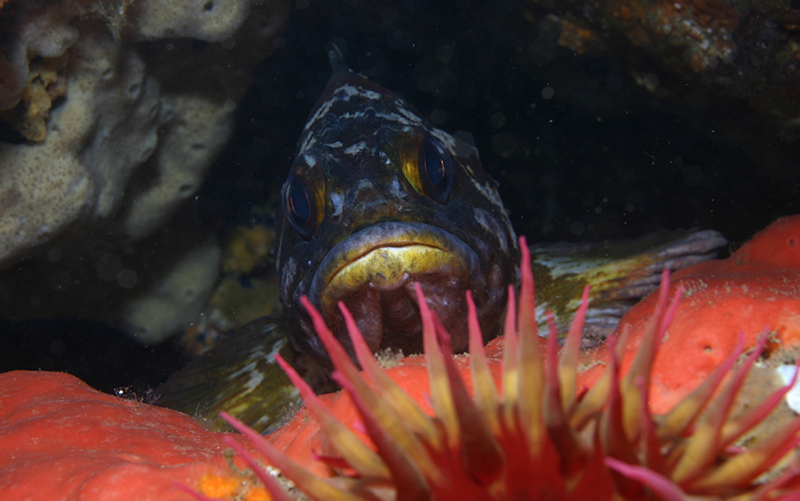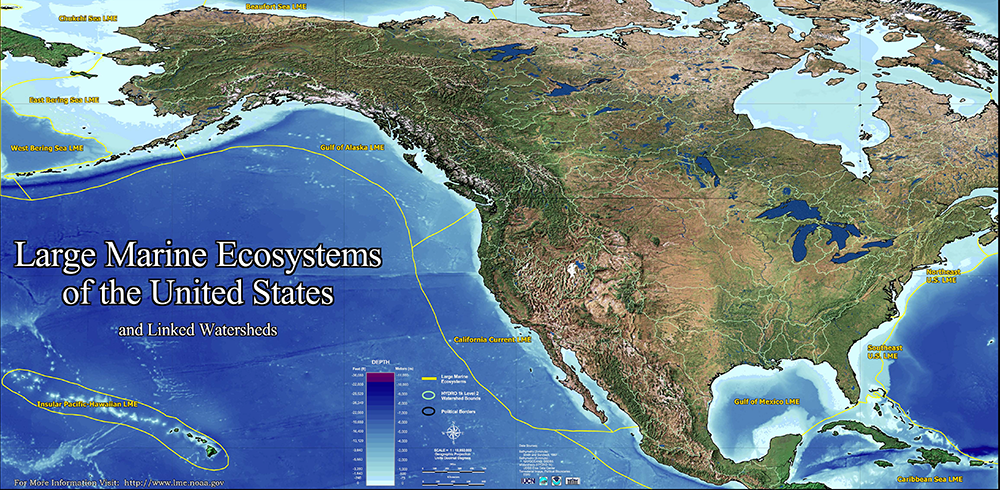Two complementary studies evaluate skill of sea surface temperature forecasts for coastal marine ecosystems
Sea surface temperatures (SST) influence the processes driving global weather and climate. Fluctuations in SSTs can also influence marine ecosystems, which are sensitive to these variations—especially for prolonged periods. Better climate forecasts from seasons to decades are, therefore, critical for marine resource decision making. In a new study led by CIRES and NOAA researchers at ESRL's Physical Sciences Laboratory, the skill of monthly SST anomaly predictions were evaluated for large marine ecosystems (LMEs) in coastal regions of the United States and Canada using a suite of climate models from the North American Multimodel Ensemble (NMME)—a newly available experimental seasonal forecasting system. Their findings, to be published in a special issue of Climate Dynamics, indicate that current global climate forecast systems with relatively coarse oceanic and atmospheric resolution are skillful in forecasting SST anomalies in many coastal LME regions. Forecasts based on the full NMME ensemble are also shown to be more skillful than predictions from even the best single model. The improvement in skill is particularly noteworthy for probability forecasts that estimate how frequently the observed and predicted SST anomalies, or departures from normal, occur in the cold, middle or warm categories
Appearing in the same issue, a complementary study by four of the same researchers focuses in more detail on SST forecasts in the California Current System (CCS). This southward-moving current of cool water extends along nearly all of the U.S. West Coast, and is one of the world’s most productive marine ecosystems. The CCS is home to many different marine animals and supports a large fishing community. Changes in physical characteristics such as sea surface temperature can significantly impact its marine resources. The NMME was found to produce skillful predictions of SST in the CCS, particularly for the late winter and spring, up to four months in advance. Fisheries management strategies currently don’t incorporate seasonal forecasts of changes in the Current's physical characteristics, which can significantly impact marine resources. These findings suggest considerable promise for producing forecasts at a finer scale in the region and for improving short-term marine resources management.
SST anomalies are often both leading indicators and important drivers of marine resource fluctuations. While climate models have been used to make seasonal forecast outlooks for El Niño and La Niña conditions in the equatorial Pacific region for more than a decade, very few studies have explored the prediction skill of SST anomaly forecasts within coastal ecosystem regions accounting for the majority of global fish yields. Probability forecasts, including tercile predictions (where forecasts are evaluated by how well they predict SST anomalies in three categories: cold, middle and warm) from the NMME, are frequently used in seasonal climate predictions forecasts for atmospheric variables and may have many uses in marine resource management.
Posted: June 2, 2017
Hervieux, G., M. A. Alexander, C. A. Stock, M. G. Jacox, K. Pegion, E. Becker, F. Castruccio, and D. Tommasi (March 2017): More Reliable Coastal SST Forecasts from the North American Multimodel Ensemble, Clim. Dyn., http://doi.org/10.1007/s00382-017-3652-7.
Jacox, M.G., M. A. Alexander, C. A. Stock, and G. Hervieux (2017): On the skill of seasonal sea surface temperature forecasts in the California Current System and its connection to ENSO variability. Clim. Dyn., https://doi.org/10.1007/s00382-017-3608-y.

